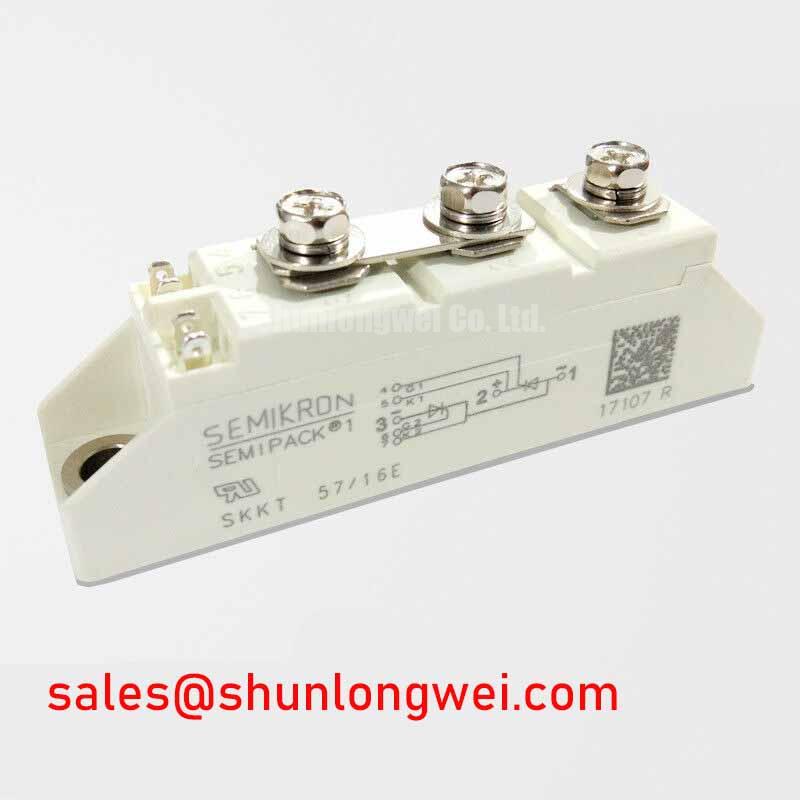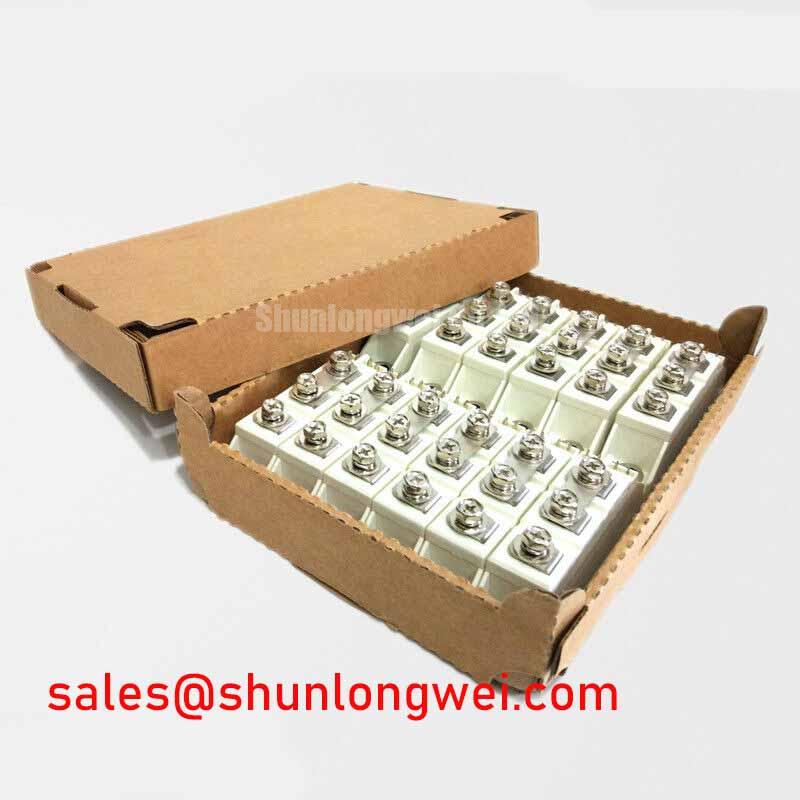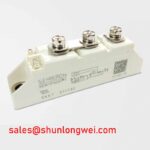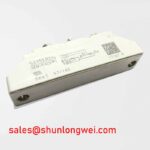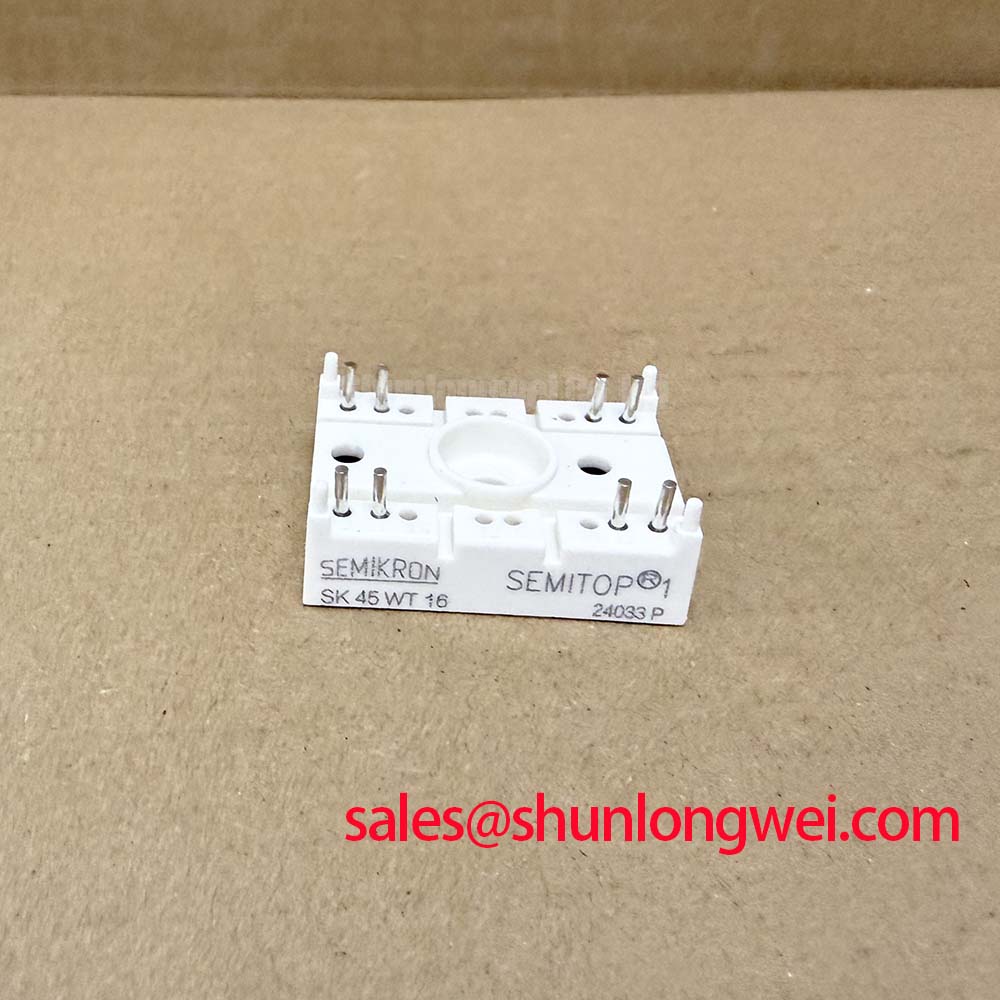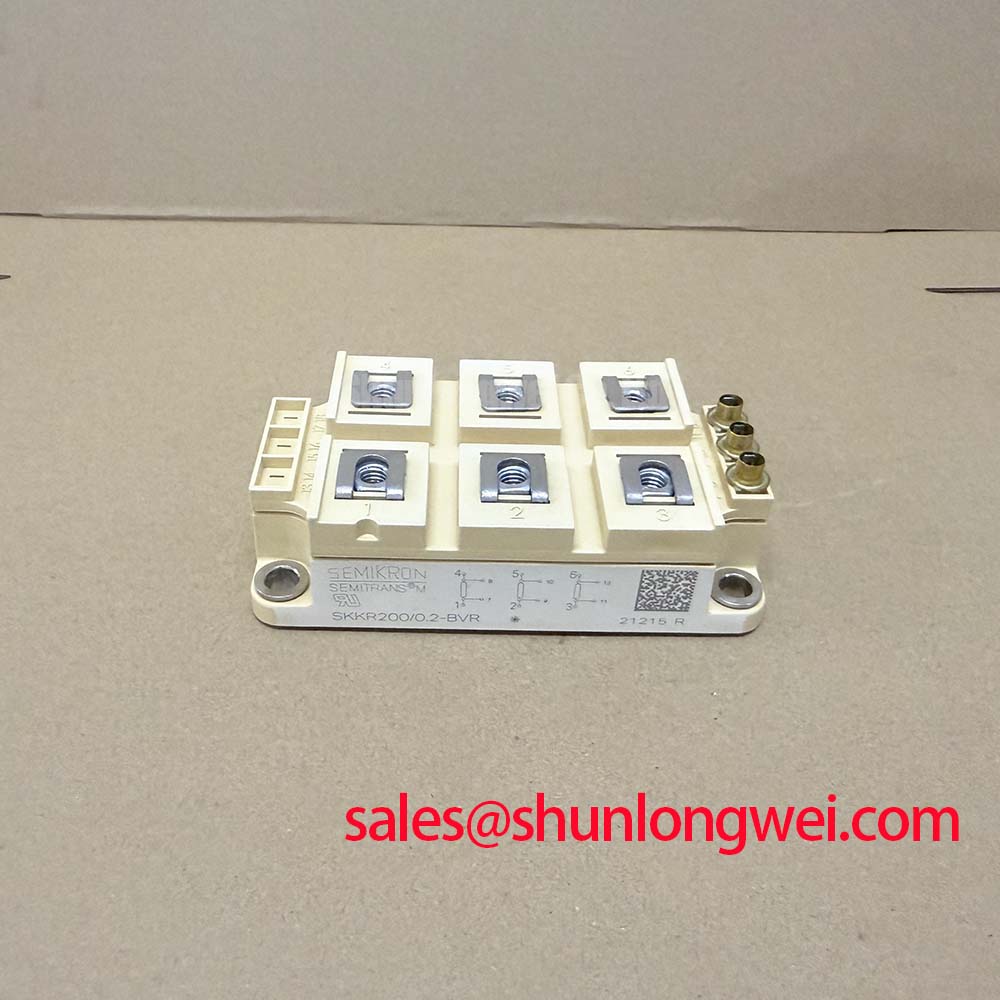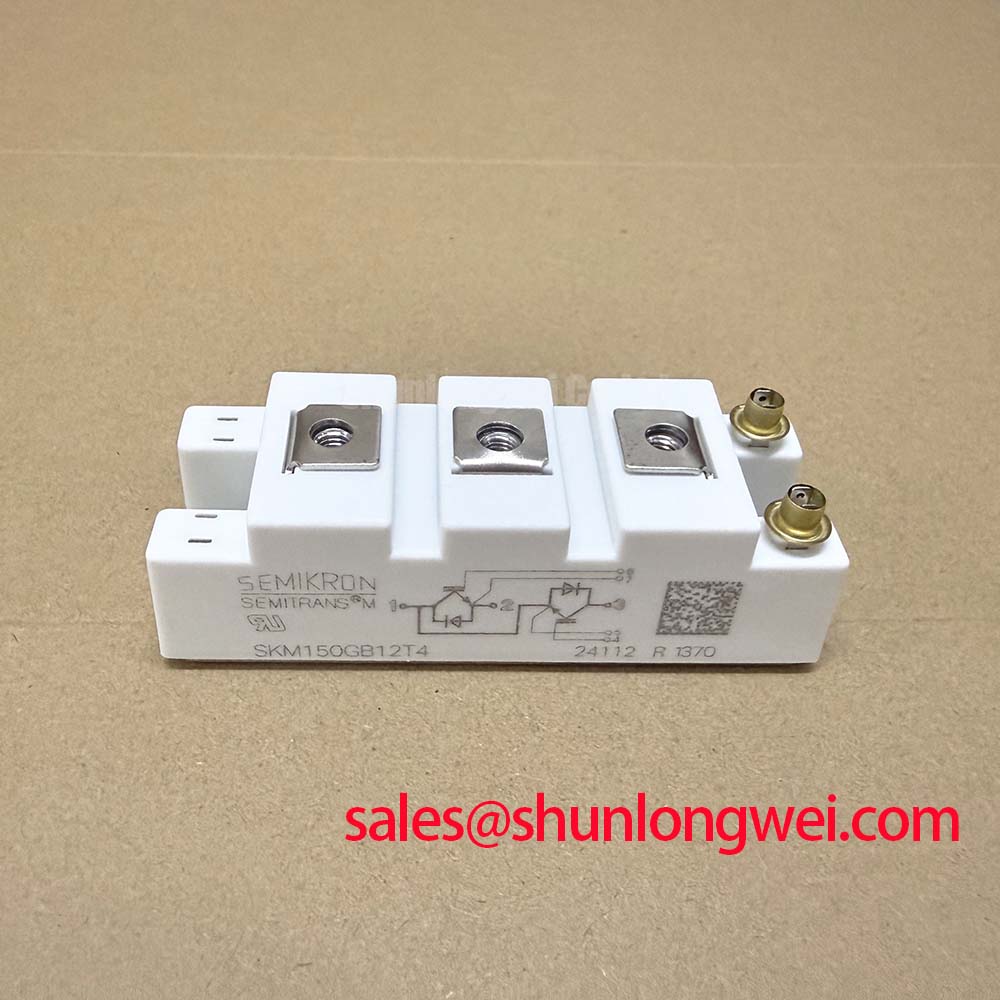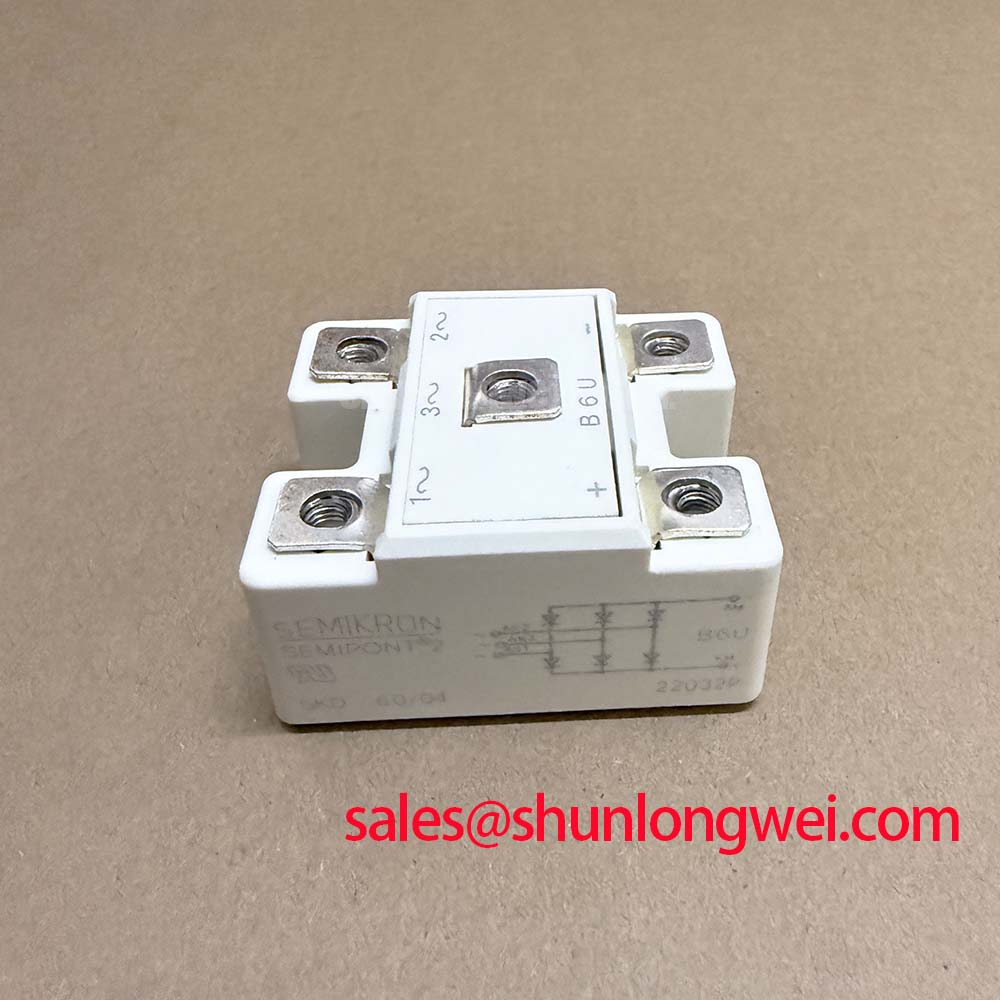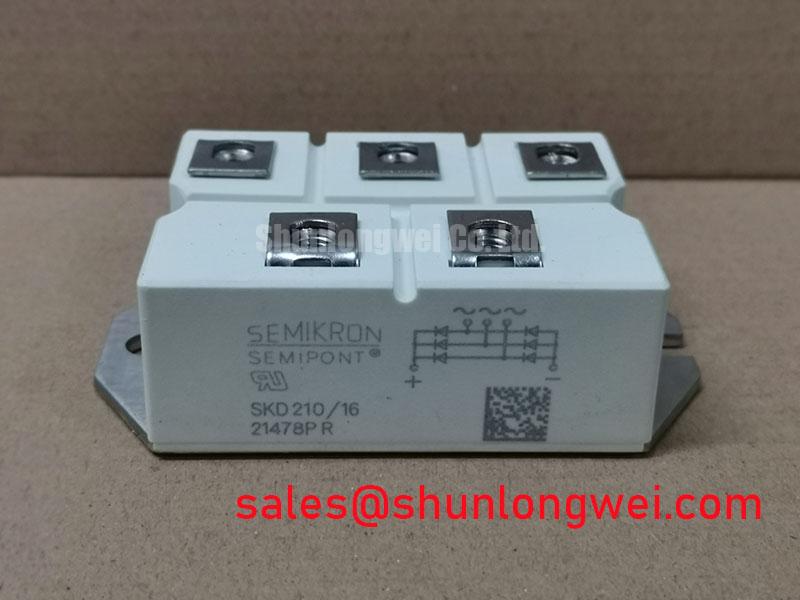Semikron SKKT57/16E | Robust Thyristor Module for High-Reliability Power Control
The Semikron SKKT57/16E is an industry-standard thyristor/thyristor (SCR/SCR) module engineered for unparalleled reliability in demanding power conversion applications. This component is not designed for high-frequency switching; instead, it provides robust, efficient, and highly reliable control for line-frequency systems. Leveraging Semikron's decades of expertise, the SKKT57/16E is built around glass passivated thyristor chips, ensuring stable performance and a long operational lifespan even under harsh industrial conditions.
- High Blocking Voltage: With a 1600V repetitive peak off-state voltage (VDRM/VRRM), it offers a substantial safety margin for systems operating on 380V, 480V, and even 690V industrial mains.
- Proven SEMIPACK® 1 Package: Housed in an industry-recognized package, it facilitates straightforward mechanical design, easy mounting, and simplified field replacement.
- Dual Thyristor Configuration: The series-connected pair of thyristors (half-bridge) provides inherent flexibility for designing single-phase AC controllers or legs of a three-phase controlled rectifier.
- Exceptional Surge Capability: Engineered to withstand significant inrush currents, a critical feature for motor starting and transformer-coupled loads.
Application Scenarios & Engineering Value
The SKKT57/16E excels where brute-force reliability is paramount. Its design directly addresses the core challenges in medium-power AC and DC control systems.
- Industrial Motor Soft Starters: In this application, the SKKT57/16E is used for phase-angle control to gradually ramp up the voltage supplied to an AC induction motor. This controlled start significantly reduces mechanical shock on gearboxes and conveyors and limits electrical inrush currents, preventing nuisance trips and reducing stress on the power grid. Its high surge current rating (ITSM) is essential for surviving the initial startup torque demands.
- Controlled Rectifiers for DC Power: As the core of a controlled bridge rectifier, this module enables precise regulation of DC output voltage for applications like industrial electroplating, large-scale battery charging systems, and DC motor drives. The 1600V rating provides robust protection against line transients common in industrial environments.
- AC Power & Heater Control: For large resistive loads such as industrial furnaces, ovens, and plastic extrusion machines, the SKKT57/16E offers a simple and highly effective method of temperature regulation. Its low on-state voltage drop (VT) ensures high efficiency by minimizing conduction losses, directly translating to lower energy consumption and reduced heatsink requirements.
Key Parameter Overview
The following table outlines the critical electrical and thermal parameters for the Semikron SKKT57/16E, providing engineers with the essential data for system design and simulation. For a complete dataset, review the official datasheet.
| Parameter | Symbol | Value / Condition |
|---|---|---|
| Repetitive Peak Off-State Voltage | VDRM, VRRM | 1600 V |
| Average On-State Current | IT(AV) | 57 A (Tcase = 85°C) |
| RMS On-State Current | IT(RMS) | 90 A |
| Peak Surge Current | ITSM | 1150 A (10 ms, 50 Hz) |
| On-State Voltage | VT | ≤ 1.75 V (at IT = 180 A) |
| Gate Trigger Current | IGT | ≤ 150 mA |
| Thermal Resistance, Junction to Case | Rth(j-c) | 0.4 °C/W (per thyristor) |
For comprehensive specifications and characteristic curves, you can download the SKKT57/16E datasheet here.
Design & Selection Considerations
Choosing the SKKT57/16E involves understanding its advantages in specific engineering contexts:
Module vs. Discrete Thyristors: While discrete SCRs offer layout flexibility, the SKKT57/16E module provides significant system-level benefits. It integrates two devices onto a single electrically isolated baseplate, simplifying heatsink design, reducing assembly time, and minimizing parasitic inductance between components. This leads to more predictable and reliable thermal and electrical performance compared to a discrete assembly.
Thyristor vs. IGBT for AC Control: It's critical to select the right tool for the job. Thyristors are latching devices, ideal for low-frequency phase-angle control as seen in Variable Frequency Drive front-ends or soft starters. They are inherently robust and simple to control. In contrast, modern IGBT modules are designed for high-frequency PWM control, offering superior performance in applications requiring fast, dynamic response. For rugged, line-frequency (50/60Hz) power regulation, the SKKT57/16E remains a superior and more cost-effective choice.
Frequently Asked Questions (FAQ)
What are the critical aspects of the gate drive circuit for the SKKT57/16E?
Unlike an IGBT, a thyristor only needs a trigger pulse to turn on; it then latches and remains on as long as current flows. The gate drive circuit must provide a current pulse (IGT) strong enough and long enough to ensure the main current has risen above the latching current, especially with inductive loads. Referencing a guide on robust gate drive design can provide transferable principles on signal integrity and layout.
Can these modules be paralleled for higher current capacity?
Yes, but it requires careful engineering. To ensure proper current sharing, devices selected for paralleling should have closely matched on-state voltage (VT) characteristics. Additionally, individual gate drive circuits or isolating pulse transformers are often recommended to guarantee simultaneous triggering of all parallel modules. For assistance with high-current designs, it is best to contact our technical team for specific application support.

